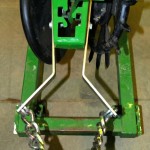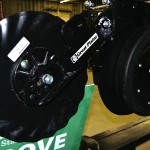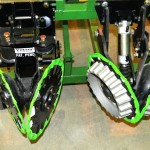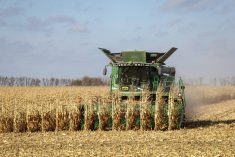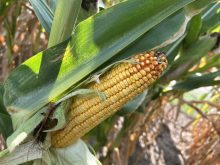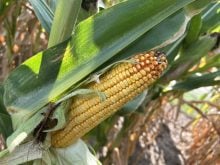There are few things more pleasing to the eye than perfectly spaced corn seedlings emerging in neat rows from rich black soil.
But whether you’re a home gardener or a farmer with thousands of acres, the sight of missed spots and doubles crowded together leaves you with that aggravating, sinking feeling that your chances for getting the best possible corn yield have already left the station.
That’s because the ideal corn crop should be as “uniform as a picket fence, with carbon copy ears,” said Bill Lemkuhl, an independent crop consultant and farmer from Ohio who has led planter clinics all across the U.S. and Canada since 1996.
Read Also
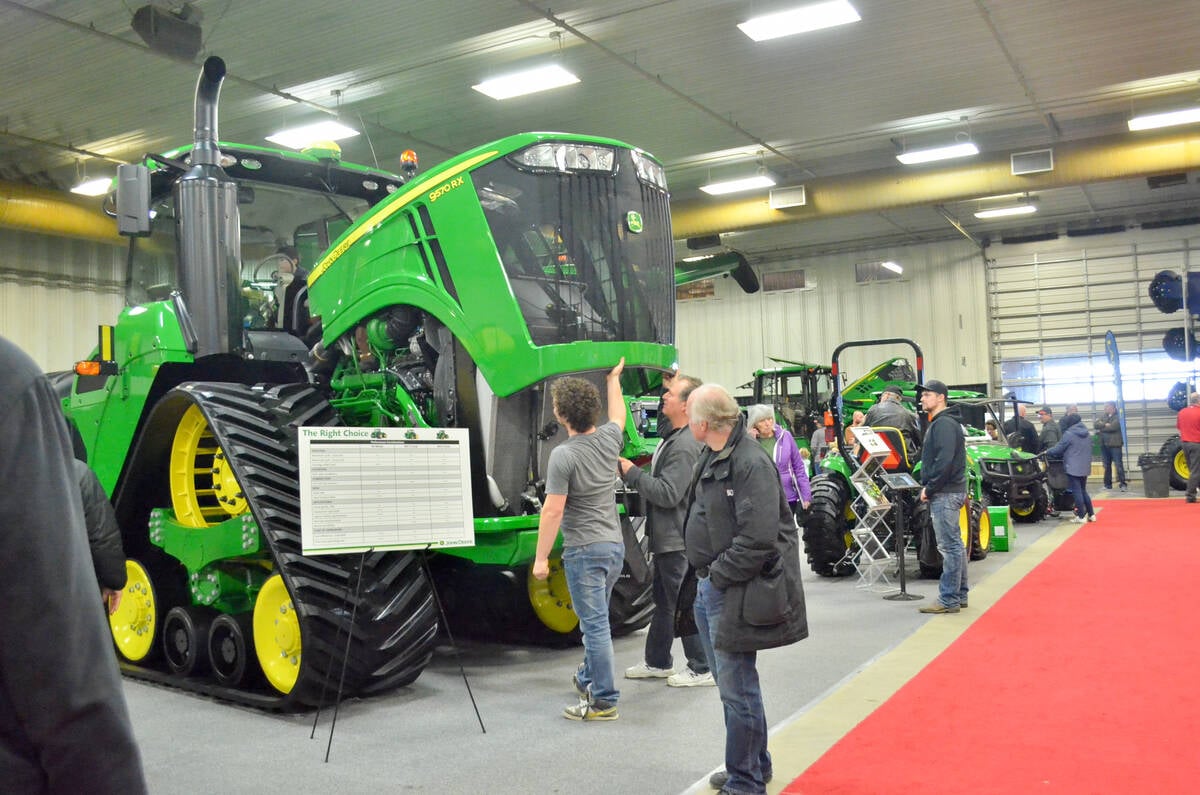
Manitoba Ag Days 2026 coming up fast
Canada’s largest indoor farm show, Manitoba Ag Days, returns to Brandon’s Keystone Centre Jan. 20-22, 2026. Here’s what to expect this year.
Just how much does a double or a miss cost from a poorly set, maintained or defective planter?
On 30-inch row spacing, a 17.5-foot row of corn amounts to one-one-thousandth of an acre. That means if the planter missed a single seed, that’s one lost ear. If it fumbles two of them closer than six inches apart, the result could be two puny ears, or even two lost ears due to needless, season-long competition.
Mistakes made by machines tend to be repeated with moronic consistency. Ramp those lost ears up to an acre and that’s five to seven bushels per acre in lost yield.
“Most guys spend more time setting their combine than they do their corn planter. Remember this, the sins of planting will haunt you all season long,” said Lemkuhl, who explained how to set a corn planter from “hitch to closing wheel” at a recent DuPont Pioneer corn production workshop attended by well over 200 farmers.
Growing good corn crops starts with uniform spacing, seeding depth, and maintaining an optimal microenvironment for every plant.
Effect on yields
How much will mistakes in those three particulars affect yields?
Ideal depth is 1-3/4 inches, but seed planted too deep or too shallow, or too close together, or any other negative factor at seeding will leave the corn with thinner stalks and smaller cobs.
“Our goal is to put an ear on every plant. After we do that, it’s up to Mother Nature to provide sunlight and rain,” said Lemkuhl. “In our operation, the planter pass is sacred. It sets the maximum yield of that seed at the beginning.”
Going back to the one-one-thousandth of an acre yield-estimating technique, Lemkuhl said that a good cob of corn should have 34-35 kernels in length, and 16-18 kernel rows around it.
Every two kernel rows missing around the cob amounts to a yield loss of 20 bushels per acre. In other words, small cobs cost money.
First, set the hitch height level, or slightly high, in the actual working conditions in the field, not on gravel in the yard. It’s impossible to do it yourself, so Lemkuhl advises farmers to have someone else drive the tractor and seeder past them for a good look.
- Lemkuhl likes to pair spike and rubber closing wheels followed by a drag chain.
- No-till slit openers shouldn’t cut deeper than the double discs.
- Row cleaners keep trouble out of the seed trench.
Deviation
Any deviation will affect the pitch angle of the seed tubes and therefore seeding depth, which in turn affects seedling emergence.
Ever since manufacturers started adding “down force” measurement capability to planters, that metric has become a buzzword among farmers concerned about maintaining uniform seeding depth on multi-row units.
Lemkuhl prefers air bag or hydraulic adjustments over springs, but he acknowledged that Monosem’s design is very effective.
Too little, means the planter units may bounce along the field, especially at higher speeds, but too much down force can trap the crown roots — the all-important “pipelines” of corn plant development — in the seed trench and limit cob development.
“If the No. 3 crown root can’t get out, or struggles to get out, you have hurt yourself the entire year,” said Lemkuhl, citing side-by-side research plots that showed 400 pounds of down force yielded 20 bushels less per acre than 100 pounds.
From the Grainews website: Listen to your air seeder
Seeding efficiency
Central-fill planters offer greater seeding efficiency, but he dislikes their tendency to concentrate too much weight over the centre frame section while leaving the wings riding higher. A three-year study has found that there was a 22 bushel/acre yield difference between the two areas, he added.
Depth gauge wheels should roll very tightly up against the seed opener discs. With the planter parked in a raised position, test each one by lifting it up against the depth stop while checking for fit.
In wet conditions, too much space can cause balling up in the gap. In minimal moisture conditions, it could be funnelling dry soil into the seed trench where it can delay germination.
Wavy no-till coulters are often used to clear residue out of the way of the disc openers, but care must be taken to ensure that they are not penetrating deeper than the openers and creating a “false bottom” in the seed trench.
To check, he advises laying down a 2×6 underneath and lowering the planter down until the double discs touch it. If the no-till coulter still spins, you’re good.
“We want the double-disc openers making a good, firm bottom to the seed trench,” said Lemkuhl.
Spreading chaff
Whether farming no till, minimum till or conventional, chaff and straw need to be spread the width of the machine as it comes out the back of the combine in the fall — not in the spring.
Row cleaners must sweep crop residue and large clods aside, away from the depth gauge wheels.
If not, such junk can affect seeding depth, wick out moisture away from the seed, cause a skip or miss, or create conditions for disease and delayed emergence.
“That’s going to be our problem child when it comes to ear count. They’ll either be behind, or won’t set an ear,” said Lemkuhl.
Closing wheels are the last thing to roll over the seed trench, but some designs are little more than “blunt force trauma” — especially if the ground is too wet.
Two spiked wheels can be too aggressive, so Lemkuhl prefers to stagger a single spike wheel in the front position paired with a rubber wheel in the rear, followed by a drag chain.
“I really like what a drag chain does in terms of keeping a uniform environment above the seed,” said Lemkuhl.


